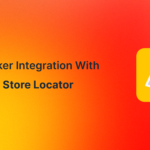It is no secret that businesses rely on sales to stay afloat and be successful. However, in order to make sales, businesses must first have products that appeal to their target customers. One of the best ways to do this is to offer products with variants, as this increases the chances of customers finding something that works for them. Not only does this help customers find the exact product that fits their needs, but it also helps businesses increase their sales numbers. We will look at the different types of variants that can be used, the benefits of offering products with variants, and how to effectively implement them.
By the end of this blog post, businesses should have a better understanding of how selling products with variants can help them boost their sales figures.
How to use product variants to increase sales
So, how exactly can you use variants to increase your sales? At the most basic level, you can use them to show customers what exact product they’re purchasing (and to give you better inventory control). But, as we mentioned above, there are several more innovative ways you can use this feature.
1. Product research
In the world of retail, when a customer asks for a specific product, the merchant has to dig through their entire inventory and find the right one. If they don’t have it in stock, they’ll have to search for it in the meantime and maybe even order it.
If you’re running an eCommerce business, everything is already stocked, and you don’t have to worry about running out of a product that’s in particular demand. This is why it’s best to make use of variants to increase your sales, especially when you’re selling niche products that aren’t easy to find in stores.
For example, say you’re a jewelry business that specializes in unique diamond designs. You might want to offer customers a chance to buy a diamond with their favorite animal on it, or a diamond with the initials of their lover inscribed on it. These diamonds would be extremely rare, and finding a store that carries them all would be difficult. However, with Shopify variants, you can put these unique diamonds in an interactive format on your website and let customers choose their preferred option.
Have you ever shopped at a store with multiple options for the same product? Maybe you found a necklace that you liked, but there were also a couple of other necklaces that the shop owner said were very similar. In this situation, the customer has no idea what type of necklace they’re buying until they receive it. This is why, in the world of retail, merchants have shied away from offering multiple product options, especially when it comes to expensive or scarce items.
2. Product options
However, online marketplaces have opened up a new world of possibilities when it comes to this scenario. With variants, you can group several different products (which might all be identical, except for a couple of differences) under a single product listing. This allows you to show customers the different options that you have and decide, based on what they’ve chosen, whether to offer them additional products or discounts.
For example, let’s say you’re running a floral business that also does event planning, and you want to offer both services to your customers. You might want to create a single product listing for an event planner, with all the different items you have that are related to that service (such as tablecloths, napkins, and chair covers). Then, you can have several different types of flowers you can offer (roses, lilies, or orchids), and, based on what they’ve chosen (i.e., the event plan), you can present them with other products related to that service (such as the tablecloths and chair covers).
3. Displaying multiple prices
In most situations, when a customer makes a purchase, the merchant will charge them the list price for the product. However, if you’re using variants, you can create a listing where the customer sees all your discounted prices, rather than your standard list price. In some cases, you might even want to make the discount available only when the customer makes a purchase of a certain amount, or offers certain types of provenance (where the item has a specific backstory or history).
This way, you can give customers a taste of what they’re buying without completely stripping your savings from your books. In addition, if you’re using a subscription model, you can set a discounted price for a certain number of units (where each unit is equivalent to one item in your list). So, rather than having to remember to lower your prices periodically, you can simply set the discounted price and watch your sales soar.
4. Shortening order turnaround time
One of the major complaints that customers have about traditional retailers is the long order turnaround time. Sometimes, it takes days or even weeks before the product is delivered to the customer. If you want to create a greater sense of urgency, you can use variants to allow customers to choose a specific time slot for when they want their product to arrive.
For example, let’s say you’re a boutique with amazing-sounding jewelry that you want to sell. You have multiple options for the same piece of jewelry, but you decide to group them together and create a single product variant. Then, you can put a time limit on it, so that it ships within a given time frame (say, within three days) or at a given price (for example, $500 or less). When the product is purchased, the customer will receive an automatic shipping notification, with a link to track their package.
This way, you can shorten the time before the customer gets their package and it will retain its freshness. When the order is shipped, the store owner can rest assured that it was packed properly and delivered on time.
5. Risk management
Imagine that you’re a jewelry store that specializes in delicate pieces. Every now and then, a customer will order something extremely precious, and it will take you a lot of time to make it. If you put this kind of burden on your employees, it might affect their productivity and make them less engaged in their work. However, if you use a tool like Shopify’s automated order handling and logistics, you can rest assured that these tasks will be handled professionally and with the utmost care.
The rise of online marketplaces and sophisticated eCommerce tools like Shopify has changed the game when it comes to selling unique or differentiated products. If you’re looking for a way to increase your sales and find a more streamlined way to do business, you can use variants to put different products under a single product listing and sell them to customers, via an eCommerce store.
Conclusion
In conclusion, products with variants can help increase sales and give customers a more customized experience. By using product variants, businesses can gain insights into customer behavior and preferences, while creating a more engaging experience. Offering product variants is a great way to increase sales, but it should be done with caution. Ensure that the variants you offer are relevant to the product and that you have the capacity to produce and deliver them.










No Comments
Leave a comment Cancel